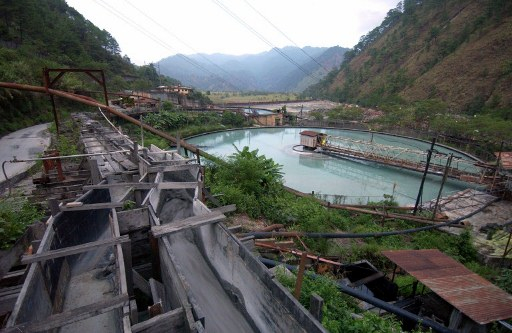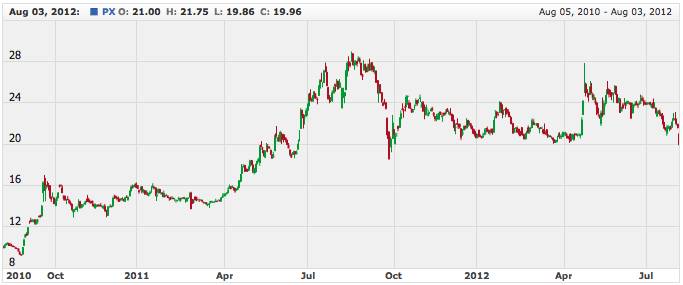SUMMARY
This is AI generated summarization, which may have errors. For context, always refer to the full article.
MANILA, Philippines – Philex Mining Corp’s gold and copper mine in Benguet province is losing P30 million to P40 million for every day it remains closed.
On Friday, August 3, regulators ordered Philex to stop operations at the Padcal mine after 2 weeks of heavy rains caused its tailings pond to spill.

Company chairman Manuel Pangilinan told reporters, “We will not commence operation until after we are satisfied that the tailings pond can hold the deposits. That might involve several days or weeks because after the pond is fixed we have to assess the condition of the pond.”
“I would say it was fairly serious. We mill about 26,000 tons of ore each day. Clearly, we were distressed because it’s an accident that we don’t want to happen,” he added.
The mine is the chief source of Philex’s income. For each month the mine is closed, the company stands to loose P1 billion or USD $24 million.
Pangilinan said it was unlikely the company would have shipments in September but believed August shipments would not be affected.
Lower gold output from Padcal already pulled down the company’s earnings in the first 6 months of the year, with net profit dropping 37% to P2.04 billion from P3.22 billion a year ago.
After the company’s announcement, shares in the mining company fell 7.6% yesterday, closing at P19.96, an 11-month low.

According to data from the Mines and Geosciences Bureau, Padcal was the largest contributor to gold production in the Philippines last year, with a gold output worth P9.2 billion ($219.8 million). The mine produced 14% of the total gold output in the Philippines, or 4.358 tons of the country’s 31.120 tons of gold in 2011.
Environmental issues
Waste from the tailings pond was flowing into 2 rivers, including the chief water source of 3 major hydroelectric plants that power the main Luzon island, Pangilinan said.
Problems with tailings ponds are not new in the Philippines. After heavy rain in October of 2005, a tailings problem in Lafayette Philippines Inc’s mine in Rapu-Rapu Island seriously damaged coastal marine life. Another large downpour in 2007 led to the collapse of a wall of a tailings pond in a gold mine in Siocon, Zamboanga del Norte.
Concerns about unsafe and environmentally harmful mining practices have fed into strong anti-mining sentiment in the past and much of the Philippines wealth still lies underground. The country has at least $840 billion in untapped mineral wealth and is considered one of the most highly mineralized countries in the world. – Rappler.com
For the existing mining contracts in the Philippines, view this #WhyMining map.
How does mining affect you? Are you pro or against mining? Engage, discuss & take a stand! Visit Rappler’s #WhyMining microsite for the latest stories on issues affecting the mining sector. Join the conversation by emailing whymining@rappler.com your views on the issue.
For other views on mining, read:
| Yes to Mining | No to Mining |
More on #WhyMining:
- Shaping the future of mining
- EO: No new mining contracts
- The Mining EO: A mixed bag
- Mining E.O. not perfect, but very good
- CONVERSATIONS: What are your thoughts on the mining EO? #WhyMining
- Mining E.O. pits gov’t vs local execs
- Correcting lies and disinformation
- Stand for the environment
- How can mining work for Philippines?
- Mining is a social justice issue
- REPLAY: #WHYMINING
Add a comment
How does this make you feel?
There are no comments yet. Add your comment to start the conversation.